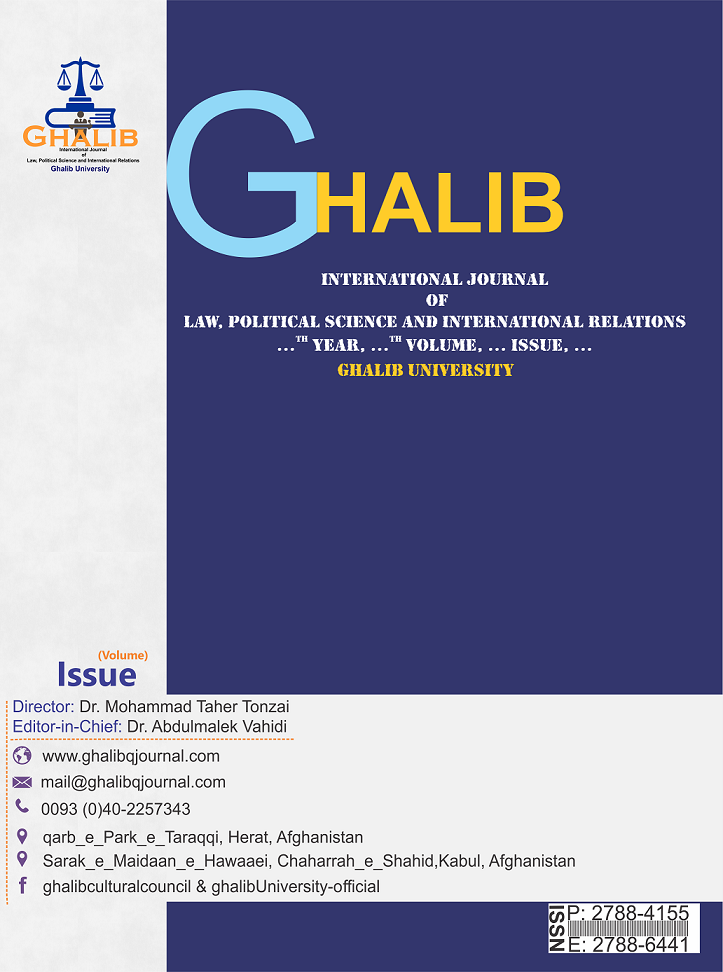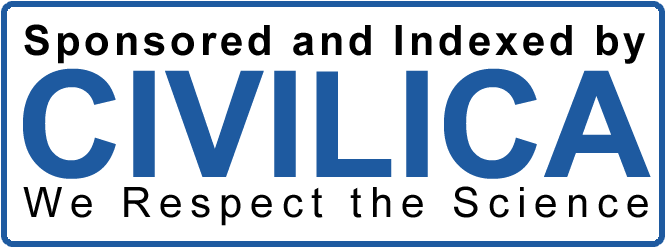Assessment of characteristics of the characteristics of colon injury and its treatment approach in Herat Regional Hospital
(2016-2018)
DOI:
https://doi.org/10.58342/.v11i3.89Keywords:
Burn, self-immolation, cause of burn, plastic surgery center, HeratAbstract
Objectives: burns are major public health problem and global harming factor in industrialized and developing societies, which leads to death in severe cases. This study aims to investigate the epidemiological study of burns in Herat plastic surgery and burns center.
Methods: In this cross-sectional descriptive study, a group of 100 burn patients aged 1-60 years were studied from the first month of March 21, 2016, to March 20, 2018 at the plastic surgery center of Herat city.
Results: The findings of the study show that most burns occur among children under age 10 (42.0%), women (54.0%), people with poor economic status (63.0%) and districts (53.0%). About half of the burns (46.0%) involve less than 20.0% of the body surface, half of the incidents are 2nd degree, and the other half are 3rd degree. Most incidents are accidental (77.0%), with the first cause being boiling water (39.0%). Two-thirds of the cases (67.0%) were treated without surgery, and the most important cause of death (62.0%) is infection and sepsis. There is a statistically significant difference between the occurrence of death and the variables of degree of burn, percentage of burn, wound infection, self-immolation, inhalation injury and gender (p<0.001).
Conclusion: The results of this study emphasize the prevalence of burns in certain age and gender categories. Burn victims are mostly children and young people. Increasing public awareness and compliance with infection prevention measures can be effective in reducing mortality. It is very necessary to carry out wider studies in the country to determine more precisely the occurrences and complications of burns.
References
A, K., A, Z. K., E, B. F., B, M. S., A, K., & A, T. A. and. (2007). Burn death rate among hospitalized patients in Zare’ teaching hospital of Mazandaran medical University, Sari, Iran (2002-04). Journal of Gorgan University of Medical Sciences, 9(1). http://goums.ac.ir/journal/article-1-280-fa.html, p. 79-82
Çakir, B., & Yeğen, B. C. (2004). Systemic responses to burn injury. Turkish Journal of Medical Sciences, 34(4), 215–226.
Calder, F. (2002). Four years of burn injuries in a Red Cross hospital in Afghanistan. Burns: Journal of the International Society for Burn Injuries, 28(6), 563–568. https://doi.org/10.1016/s0305-4179(02)00071-2
Chawla, D. (2010). Original research paper A Two-year Burns Fatality Study. https://www.academia.edu/9523081/Original_research_paper_A_Two_year_Burns_Fatality_Study, p. 292-297
Forjuoh, S. N. (2006). Burns in low- and middle-income countries: A review of available literature on descriptive epidemiology, risk factors, treatment, and prevention. Burns: Journal of the International Society for Burn Injuries, 32(5), 529–537. https://doi.org/10.1016/j.burns.2006.04.002
Gari, A. A., Al-Ghamdi, Y. A., Qutbudden, H. S., Alandonisi, M. M., Mandili, F. A., & Sultan, A. (2012). Pediatric burns in Western Saudi Arabia. Saudi Medical Journal, 33(10), 1106–1110.
Heimbach, D. (1999). Burn patients, then and now. Burns: Journal of the International Society for Burn Injuries, 25(1), 1–2.
Krug, E. G., Violence, W. H. O., & Team, I. P. (1999). Injury: A leading cause of the global burden of disease / edited by E. Krug (p. WHO/HSC/PVI/99.11). World Health Organization, p. 1-10.
Liao, C. C., & Rossignol, A. M. (2000). Landmarks in burn prevention. Burns: Journal of the International Society for Burn Injuries, 26(5), 422–434. https://doi.org/10.1016/s0305-4179(00)00026-7
McKibben, J. B. A., Ekselius, L., Girasek, D. C., Gould, N. F., Holzer, C., Rosenberg, M., Dissanaike, S., & Gielen, A. C. (2009). Epidemiology of burn injuries II: Psychiatric and behavioural perspectives. International Review of Psychiatry (Abingdon, England), 21(6), 512–521. https://doi.org/10.3109/09540260903343794
Mock, C., Quansah, R., Krishnan, R., Arreola-Risa, C., & Rivara, F. (2004). Strengthening the prevention and care of injuries worldwide. Lancet (London, England), 363(9427), 2172–2179. https://doi.org/10.1016/S0140-6736(04)16510-0
Mzezewa, S., Jonsson, K., Aberg, M., & Salemark, L. (1999). A Prospective study on the epidemiology of burns in patients admitted to the Harare burn units. Burns: Journal of the International Society for Burn Injuries, 25(6), 499–504. https://doi.org/10.1016/s0305-4179(99)00041-8
Othman, N., & Kendrick, D. (2010). Epidemiology of burn injuries in the East Mediterranean Region: A systematic review. BMC Public Health, 10(1), 83-85. https://doi.org/10.1186/1471-2458-10-83
Padovese, V., De Martino, R., Eshan, M. A., Racalbuto, V., & Oryakhail, M. A. (2010). Epidemiology and outcome of burns in Esteqlal Hospital of Kabul, Afghanistan. Burns: Journal of the International Society for Burn Injuries, 36(7), 1101–1106. https://doi.org/10.1016/j.burns.2010.01.003
Park, S.-Y., Choi, K.-A., Jang, Y., & Oh, S.-J. (2008). The risk factors of psychosocial problems for burn patients. Burns: Journal of the International Society for Burn Injuries, 34(1), 24–31. https://doi.org/10.1016/j.burns.2007.03.012
Sukhai, A., Harris, C., Moorad, R. G. R., & Dada, M. A. (2002). Suicide by self-immolation in Durban, South Africa: A five-year retrospective review. The American Journal of Forensic Medicine and Pathology, 23(3), 295–298. https://doi.org/10.1097/00000433-200209000-00020
Toon, M. H., Maybauer, D. M., Arceneaux, L. L., Fraser, J. F., Meyer, W., Runge, A., & Maybauer, M. O. (2011). Children with burn injuries—Assessment of trauma, neglect, violence and abuse. Journal of Injury & Violence Research, 3(2), 98–110. https://doi.org/10.5249/jivr.v3i2.91
Downloads
Published
How to Cite
Issue
Section
License
Copyright (c) 2022 فصلنامه علمی -پژوهشی غالب

This work is licensed under a Creative Commons Attribution-NonCommercial-NoDerivatives 4.0 International License.













